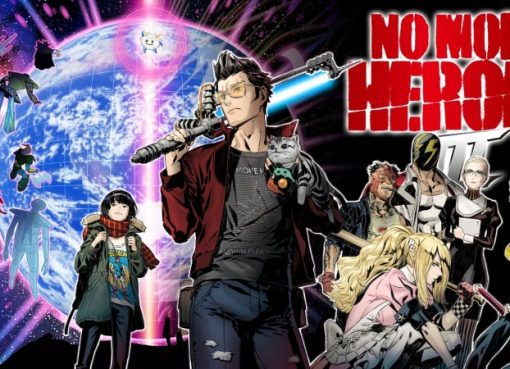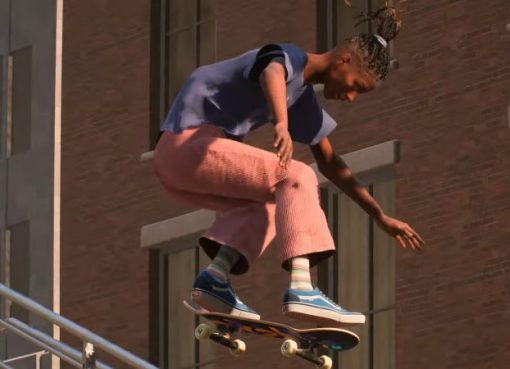The realm of virtual reality (VR) has opened doors to new dimensions of gameplay, particularly in the horror genre, where the visceral thrill of fear can be experienced like never before. Gone are the days of merely watching a horror movie unfold; with VR, players become part of the narrative, navigating eerie locations, interacting with nightmarish creatures, and confronting their deepest fears.
Each immersive experience is designed not only to scare but to engage players emotionally and psychologically, making the stakes feel incredibly real. The sense of presence fostered by VR technology adds layers of unease, turning ordinary scares into unforgettable moments.
In this exploration of the coolest titles in VR horror, we delve into engaging gameplay mechanics, technical aspects, sound design, multiplayer features, and the psychological impact driven by atmospheric storytelling.

So grab your headset and prepare for a journey through a world where fear knows no bounds.
The Scariest VR Experiences
When it comes to fear, VR does an exceptional job of enveloping players in a menacing atmosphere, making even the most mundane scenarios feel threatening. It’s this immersive experience that distinguishes the best horror VR games from their traditional equivalents.
Imagine standing alone in a darkened room, and hearing something scuttering across the floor; in VR, the impact is chilling.
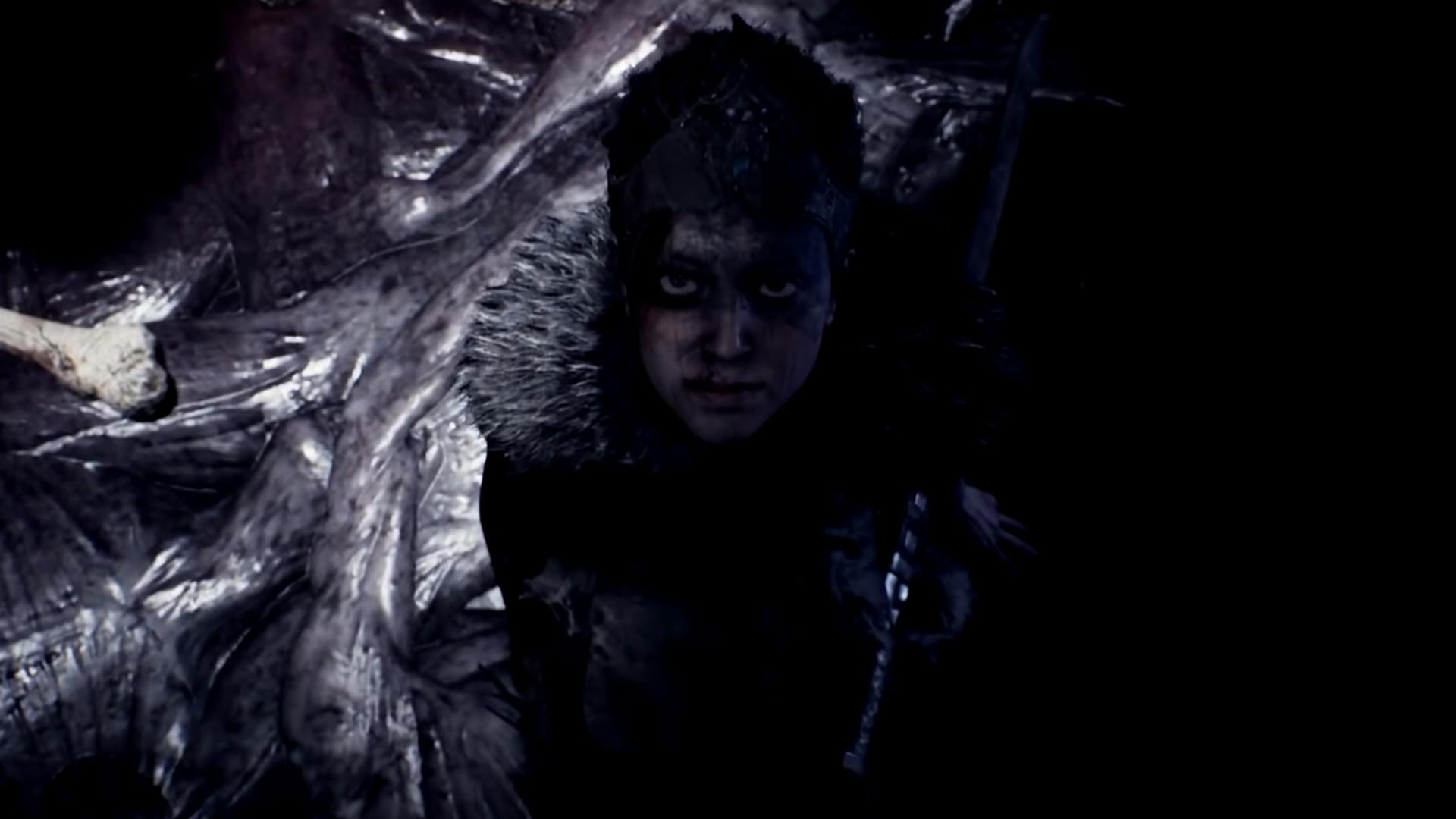
The sense of urgency is tangible when you grasp a flashlight, aim it into the darkness, and hold your breath in anticipation of what lurks ahead.
A variety of games deliver profoundly terrifying experiences through potent visuals and soundscapes. For instance, Resident Evil 7: Biohazard draws players into a horrifying narrative where every ambient noise and grotesque encounter heightens tension.
On the flip side, Phasmophobia adds horror with cooperative gameplay, allowing friends to share the thrill of ghost hunting while also experiencing the fright of potential doom. Unlike traditional horror games, these titles solicit not just jump scares but elicit a deep-seated fear through emotional investment and environmental design.
Table: Key VR Horror Experiences
| Title | Platform | Key Feature |
|---|---|---|
| Resident Evil 7: Biohazard | PSVR, PC VR | First-person survival horror |
| Phasmophobia | PC VR | Cooperative ghost hunting |
| Five Nights at Freddy’s VR | PSVR, Oculus | Jump scares playfully amplified |
| Dreadhalls | Various | Procedural generation of horror |
Each game not only offers unique gameplay mechanics but also an emotional rollercoaster that stays with players long after they’ve removed the headset.
The sheer intensity of these experiences illustrates just how much VR can alter the landscape of horror gaming.
Immersive Horror in Virtual Reality
Immersion is the backbone of any successful VR experience, especially within the horror genre. Immersive horror games engage multiple senses, pulling players into their worlds and making experiences memorable.
The thrill of virtually stepping into a creepy mansion or exploring a deserted island heightens not just fear, but emotional investment.
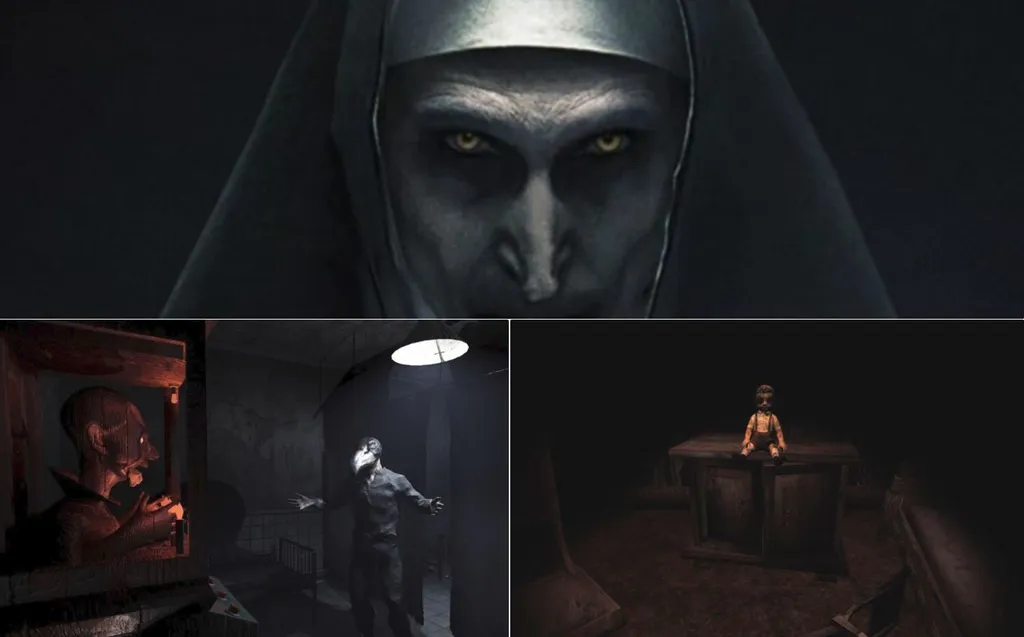
Many titles use clever design techniques to promote immersion. Resident Evil 7: Biohazard, for instance, successfully enhances player tension with its atmospheric sound design, ensuring that every creak of the floor or groan from the house feels chilling. In VR, you don’t just witness these events; you feel them.
When a mysterious shadow crosses your field of vision, your body instinctively tenses up, making every encounter feel personal and immediate.
Additionally, VR’s physical engagement is another critical component. Players must physically interact with their environment, whether it’s searching for an item, shooting a weapon, or simply moving through narrow hallways. This mechanic turns the act of movement into an intense experience, as players genuinely navigate space while being mindful of what could await them around every corner.
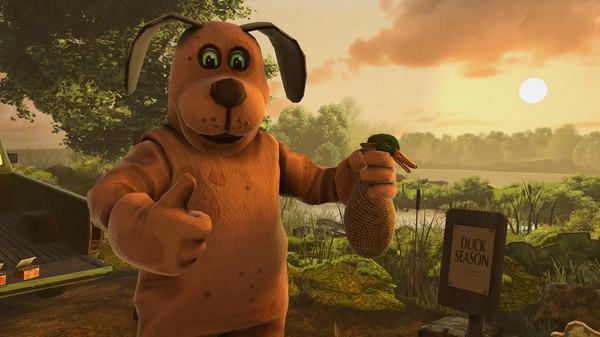
Furthermore, the art of storytelling in VR horror is critical in solidifying an immersive experience. A well-placed plot twist can make mundane settings overwhelming.
When players are invested in a narrative where their decisions affect outcomes, horror renders vivid, lingering effects that leave players feeling haunted long after the game has ended.
Psychological Thrills: Fear Beyond the Screen
One of the most profound impacts of VR in horror gaming is its ability to unearth psychological fears. While traditional media can induce fear, VR immerses players in scenarios where dread compounds upon itself, often leading to extreme stress responses.
It taps into fundamental human fears: isolation, the unknown, and confrontation with death.
VR Horror titles frequently employ tactics that extend beyond common jump scares; they delve into the psychological terror that lingers in one’s mind post-play.
For instance, The Exorcist: Legion VR combines narrative-driven elements with haunting visual effects and unsettling sounds to deliver a uniquely psychological horror experience. As players interact with the environment, they may not just face off against physical monstrosities but are often forced to confront their own fears and anxieties.
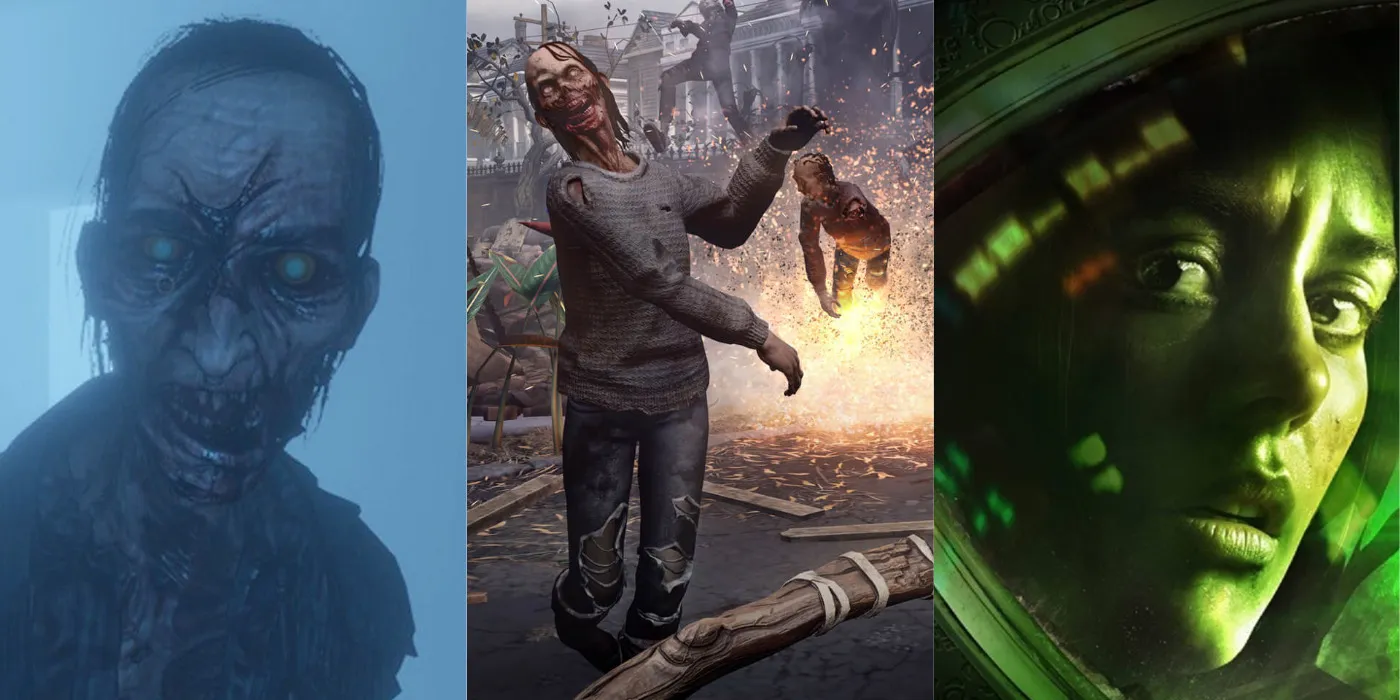
Moreover, sound design plays an instrumental role in enhancing psychological tension. Spatial audio, where sound seems to come from various locations in the game, intensifies feelings of paranoia as players become hyper-aware of their surroundings.
Studies reveal that when coupled with compelling visuals, these audio effects elicit stronger emotional responses, leaving players questioning their perception of reality.
As players grapple with various emotional responses, the resultant psychological tension can culminate in feelings of anxiety and discomfort, reinforcing the phrase “fear beyond the screen.” In post-play discussions and communities, many players report lingering dread and haunting memories from their experiences, showcasing VR’s unique capacity to evoke profound fear.
The Role of Sound and Visuals in VR Horror
Sound and visual elements form the backbone of immersive horror VR experiences, cleverly working together to manipulate player emotions and create unnerving atmospheres.
When players don their headsets, they enter worlds where even silence can be deafening, and every sound can signal impending danger.
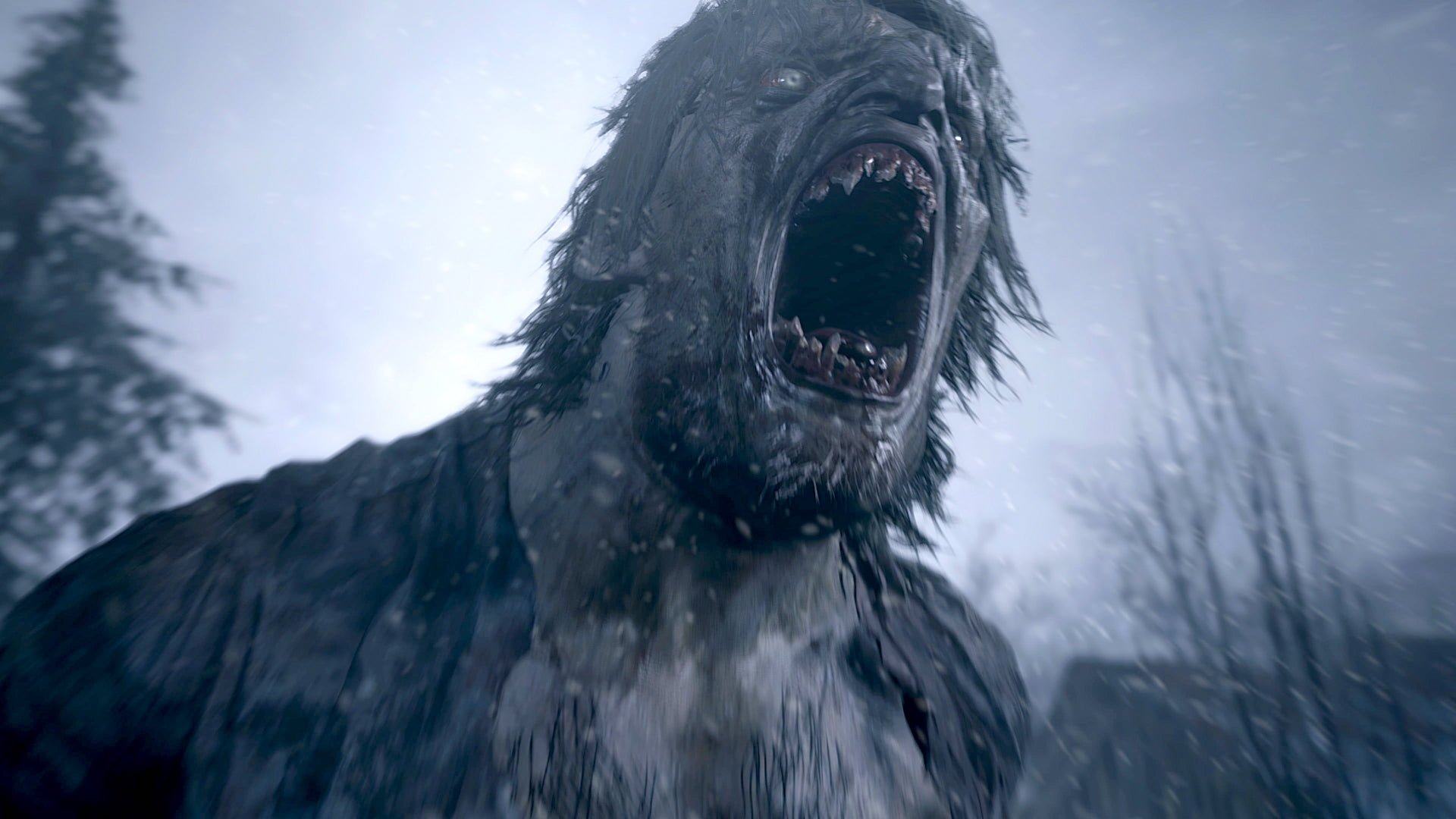
In horror VR, audio design is paramount. High-fidelity, surrounding sound allows players to feel present in the environment. Spatial sound that shifts as the player moves creates the perception that entities are lurking nearby, heightening the fear factor.
For example, Five Nights at Freddy’s VR: Help Wanted utilizes audio cues that indicate the animatronic’s movement, leading players to scan their surroundings in terror, amplifying suspense and tension.
Visual design is equally critical. Techniques such as dim lighting, shadow play, and minimalistic aesthetics are employed to evoke a sense of dread. In games like Dreadhalls, the use of darkness to obscure dangers transforms any ambient sound into potential threats. The clever use of light or lack thereof leads players to confront their fear of the unknown.
Moreover, environmental storytelling – subtle clues and details scattered throughout locations – prompts players to engage in deeper analysis of their surroundings.

This not only enhances immersion, but it also allows players to foster connections to narratives driven by visual design, creating meaningful emotional engagement.
Together, sound design and visual elements in VR horror don’t just complement each other; they create a holistic experience that leaves players baffled, scared, and yearning to discover more of the convoluted horror labyrinth.
Top VR Horror Games to Play
For any horror enthusiast, having a curated list of must-play VR horror games can greatly enhance the gaming experience. Ranging from spine-chilling solo endeavors to cooperative escapades, these titles encapsulate the thrill and terror that VR has to offer.
- Resident Evil 7: Biohazard
A crown jewel in horror gaming, this title draws players into an intense world dripping with dread and suspense. The intimate first-person perspective allows players to experience the horror firsthand, making them part of the bone-chilling narrative. - Phasmophobia
Engaging in cooperative ghost hunting, this multiplayer title has players searching for evidence of spectral entities while managing their sanity levels. The tension of exploring dark locations is heightened by VR. - Five Nights at Freddy’s VR: Help Wanted
This collection of mini-games puts players in the shoes of a frightened employee at a quirky yet terrifying pizzeria, where animatronics come alive at night. - Killing Floor: Incursion
Combining action and horror, this title immerses players in a combat-heavy environment filled with grotesque creatures while challenging them with complex puzzles. - The Exorcist: Legion VR
Driven by narrative, this game places players in the role of an investigator confronting terrifying demonic possessions within a story-filled framework.
The rich diversity in gameplay mechanics, themes, and overall experiences makes these titles essential in experiencing horror through the lens of virtual reality.
Resident Evil 7: Biohazard
Resident Evil 7: Biohazard is an emblematic title in VR horror, representing the pinnacle of immersive gaming. The title hinges on its user-driven presence that makes every jump scare feel painfully personal.
- Immersive Gameplay Experience: The game captivates players by thrusting them into the shoes of Ethan Winters as he navigates the eerie mansion of the Baker family. Every sound becomes a potential source of horror, whether it’s a whisper in the dark or a sudden crash reverberating through the mansion.
- Atmosphere and Tension: Dark lighting and unsettling settings enrich immersion, breathing life into the horrifying environment. The need to solve puzzles while evading hostile entities further raises the stakes, transforming the game from mere play to pulse-pounding suspense.
- VR Optimization: Resident Evil 7 in VR heightens its psychological and physical interactions, as players must physically move to avoid enemies and interact with perilous puzzles, creating heart-pounding moments.
- Psychological Horror Elements: Rather than relying solely on jump scares, this game weaves psychological stress into combat and environmental challenges, culminating in a protagonist’s fear that resonates with players.
- Storyline and Character Depth: The story draws players into a complex narrative where moral dilemmas unfold, ensuring emotional investment. The elaborately crafted world adds depth to the horror elements, allowing players to sympathize with characters.
In conclusion, Resident Evil 7: Biohazard sets a precedent for immersive horror gameplay by merging chilling storytelling with gripping VR interaction, making it a benchmark in the genre.
Five Nights at Freddy’s VR: Help Wanted
Five Nights at Freddy’s VR: Help Wanted represents a groundbreaking addition to the franchise, crafted to elevate the tense atmosphere through the lens of VR.
The mechanics incorporate various mini-games featuring original gameplay elements from earlier installments, effectively summoning nostalgia while immersing players in fresh scares.
- Frightening Atmosphere: The game takes place in a haunted pizzeria where animatronic characters roam freely during the night. The tension builds palpably as players sit in the dark, hearing creaks and whispers that keep them on edge.
- Interactive Gameplay: Players must interact with various components while simultaneously avoiding the horrifying animatronics that could spring to life at any moment.
- Multiple Game Modes: The variety in gameplay, from management simulation to survival horror, ensures an engaging experience that keeps players on their toes, never quite knowing what to expect next.
- Emphasis on Jump Scares: The title combines increasingly challenging scenarios with well-timed jump scares, ensuring that adrenaline runs high throughout gameplay.
- Community Engagement: The game has fostered an extensive community that shares experiences, creating an ongoing dialogue and keeping the fervor for the franchise alive.
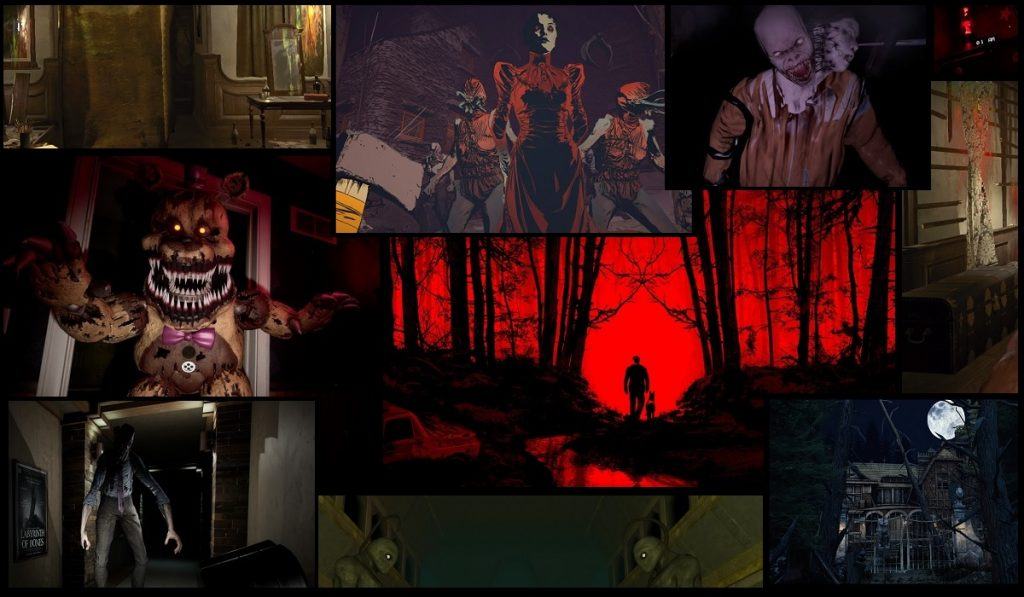
Overall, Five Nights at Freddy’s VR: Help Wanted immerses players in a heart-pounding experience that seamlessly merges the established franchise lore with innovative gameplay designed for fear.
The Exorcist: Legion VR
The Exorcist: Legion VR successfully draws from the iconic horror franchise to create a uniquely terrifying experience. This title intricately combines indulgent storytelling with chilling gameplay mechanics, immersing players in dark narratives of ghostly confrontations.
- Dynamic Gameplay: Players assume the role of a detective investigating paranormal activities while employing exorcism techniques to confront terrifying demons. This combination of roles makes for an engaging and multi-faceted experience.
- Narrative-Driven: The episodic elements of the game offer a tightly woven storyline that compels players to unravel mysteries, motivating them to continue through its eerie environments.
- Atmosphere and Visual Design: The game excels in its art direction, where unsettling visuals and subtle visual cues send shivers down players’ spines. Dark alleyways and dimly lit interiors evoke an undeniable sense of unease.
- Immersive Details: Players must interact with the environment, utilizing tools to overcome supernatural entities, fostering a tactile sensation that enhances emotional connectivity to the story.
- Psychological Horror: The core of the game’s terror lies not just in the jump scares but in the thematic elements associated with demonic possession and fear of the unknown, fostering psychological dread that resonates well after gameplay ends.
In short, The Exorcist: Legion VR symbolizes a bold step into psychological horror, delivering a unique narrative-driven experience that leaves players craving more while simultaneously remaining profoundly shaken.
Phasmophobia
Phasmophobia presents an innovative multiplayer experience that brings a cooperative aspect to the horror genre, fostering teamwork in the face of terror.
- Cooperative Gameplay: Players assume the role of ghost hunters, working collaboratively to explore haunted locations while evading hostile paranormal entities. The bond between team members is crucial for survival and enhancing gameplay experience.
- Diverse Tools and Techniques: Equipped with ghost-hunting gear such as EMF readers and cameras, players must meticulously gather evidence while managing their sanity levels throughout investigations.
- Atmospheric Design: The detailed environments come alive with authentically spine-chilling audio cues. Each tense investigation becomes wrapped in layers of sound, ensuring players are constantly aware of their surroundings.
- Fear Management: The psychological management of player sanity introduces an additional layer of strategy, where staying aware and calm becomes vital to survival.
- Community Building: The collective journey of navigating fear fosters community engagement as players share their investigations and discoveries, contributing to a supportive and creative fanbase.
Through its innovative implementation of cooperative mechanics in a horror setting, Phasmophobia represents a refreshing twist, fostering camaraderie while plunging players into terrifying encounters.
Killing Floor: Incursion
When speaking about action-oriented horror experiences in VR, Killing Floor: Incursion stands out, with its focus on combat and thrilling engagements with monstrosities.
- Combat-Heavy Action: The game combines first-person shooter mechanics with horror elements, offering intense and visceral combat as players navigate grotesque settings.
- Puzzle Mechanics: Engaging puzzles require critical thinking and strategy, making gameplay multifaceted and balancing the horror of combat with the tension of problem-solving.
- Dynamic Encounters: Players face hordes of undead-like creatures that provide unpredictable challenges, keeping them on high alert throughout their journey.
- Wholesome Atmosphere: The game’s detailed environments including ominous lighting and unsettling ambiance warrant an authentic horror experience that maintains high engagement levels.
- Social Experience: Designed as a shared adventure, Killing Floor: Incursion encourages players to use their skills collectively, enhancing the immersive sensation of survival.
Killing Floor: Incursion exemplifies how horror can appertain to both tension and action, creating memorable moments where fear and adrenaline can combine for a uniquely thrilling experience.
Resident Evil 4 VR
Resident Evil 4 VR is a testament to how the foundation laid by the original game can be expanded into VR, offering entirely new dimensions of gameplay and horror.
- Fully Immersive Controls: The VR adaptation emphasizes the tactile nature of gameplay, requiring players to physically control weapons and navigate their environment, fostering a sense of presence.
- Enhanced Enemy Interaction: Players can engage dynamically with foes, utilizing various weaponry and tools, heightening engagement and creating frantic moments of horror.
- Realistic Puzzle Solving: The necessity for physical interaction with puzzles adds layers to gameplay that promote deeper engagement, as players manipulate objects to solve problems.
- Combat Realism: With remapped mechanics ensuring seamless interaction, players must reload and utilize weapons in real-time, further embedding them within the heart of the horror experience.
- Visual and Auditory Atmosphere: The detailed graphics and immersive sound design resonate with players, creating a compelling horror ambiance that enhances every encounter.
In summary, Resident Evil 4 VR has successfully reinvented the original horror epic, utilizing VR technology to create an experience where fear can be felt in an all-encompassing manner.
Unique Gameplay Features in VR Horror
The unique gameplay features of VR horror games contribute significantly to their immersive and terrifying experiences. Through inventive mechanics, titles harness the distinctive capabilities of virtual reality to redefine player interactions. Here are some notable elements:
- Tactile Interactions: Players physically manipulate their environment, whether it’s opening doors, throwing objects, or activating equipment. This degree of engagement fosters emotional connections, raising the stakes in moments of horror.
- Navigation Through VR Space: Many titles incorporate a freedom of movement that allows players to fully traverse detailed environments, with immersion heightened as they physically handle obstacles and threats.
- Resource Management: With the addition of managing supplies or tools, gameplay becomes gripping as players must make tough decisions and strategize amidst an environment focused on survival.
- Quick-time Events (QTEs): These mechanics introduce a timed pressure that requires players to respond rapidly to threats, generating a heart-pounding, suspenseful experience.

By amplifying emotional engagement through these gameplay mechanics, VR horror games have cultivated an atmosphere that resonates with players, making fear feel more palpable than ever.
Interaction Mechanics: Hand Tracking and Movement
Hand tracking and movement are paramount in enhancing gameplay within VR horror, creating an authentically immersive experience.
- Natural Interactions: Hand tracking facilitates users’ interaction with objects and environments in ways that mirror real-life communication. Players can physically reach out to touch or manipulate items, leading to more intuitive player movements.
- Heightened Emotional Responses: The capacity to interact with the environment amplifies immersion and the psychological impact of fear. The act of physically tossing an object or opening a door becomes nerve-wracking, enhancing tension.
- Dynamic Movement: Players’ movements can dictate game outcomes. The freedom to navigate environments, crouch, or dodge creates scenarios where survival hinges on reflexes, invigorating gameplay with unpredictability.
- Environmental Detail: Games like Resident Evil 7 showcase how detailed environments respond to player actions, creating feelings of anxiety and tension. This dynamic interaction serves as a critical component in making the horror experience feel genuine.
Hand tracking and movement mechanics represent a significant shift in gaming, allowing players to physically engage with their fears and experiences, making encounters deeply personal and impacting player perceptions of reality.
The Impact of Environment on Fear
The environment in which VR horror games are set plays a critical role in shaping players’ experiences, creating atmospheres that invoke visceral reactions.
- Design Elements: Thoughtfully constructed environments utilize color palettes, lighting, and layout to provoke feelings of dread. Dark corners and limited visibility encourage players to question their surroundings, heightening anxiety.
- Spatial Awareness: The spatial dynamics inherent in VR provide players a sense of immersion, where physical space influences the psychological experience. Players may feel vulnerable when cornered, triggering primal fears.
- Unexpected Events: Environments filled with potential jump scares engage players that could lead to unexpected encounters or events. Unpredictable elements foster a sense of tension and uncertainty that keeps players apprehensive.
- Environmental Storytelling: Clues embedded within elements give context to the horrors that unfold, allowing players to understand their surroundings and feel more connected to the narrative.
The interaction between players and their environments shapes the core of the horror experience, ensuring fear is felt not only through jump scares but as an ongoing psychological encounter.
Multiplayer Horror: Cooperative Scares
Multiplayer VR horror games allow players to band together for cooperative scares, enhancing both gameplay and engagement.
These titles embed the principle of teamwork into their overarching design, creating memorable experiences. Here are notable features of multiplayer horror:
- Shared Experiences: The act of confronting fears together creates bonds among players, as success or failure hinges on collective effort in the face of terror.
- Strategic Gameplay: Many multiplayer horror games introduce mechanics that require communication and teamwork, as players navigate dangerous environments and solve challenges together.
- In-game Communication: Realistic player communication fosters engagement and immersion; the backdrop of horror deepens player connections as they work to achieve common goals.
- Community Dynamics: Online multiplayer experiences often encourage community sharing of thrilling moments, strategies, and gameplay stories that resonate beyond the play session.
These cooperative elements underscore the shared fear, fostering environments where the horror is not only personal but intertwined with communal experiences.
Recommendations by VR Platforms
Navigating VR horror can be overwhelming, so it’s insightful to explore recommended titles curated for specific VR platforms. Here’s a compact overview:
Best VR Horror Games for Oculus Quest
- Resident Evil 4 VR – A classic reimagined, featuring immersive combat and survival elements.
- The Exorcist: Legion VR – A chilling narrative-driven horror adventure with supernatural elements.
- Paranormal Activity: The Lost Soul – Engaging players in uncovering scary secrets lurking in a home.
- Dreadhalls – Offering procedurally generated dungeons for uniquely horrifying experiences.
- Affected: The Manor – An interactive haunted house experience devoid of traditional combat mechanics.
Must-Play VR Horror Games for PSVR
- Resident Evil 7: Biohazard – This title breathes new life into the horror genre through first-person scares.
- Until Dawn: Rush of Blood – An on-rails shooter integrating horror with adrenaline-pumping action.
- Dreadhalls (also available on PSVR) – Often noted for terrifying random dungeons and immersive gameplay.
- Phasmophobia (enhanced VR mode) – Integrating ghost hunting strategies with thrilling co-op gameplay.
- The Inpatient – A psychological horror narrative emphasizing impact-driven choices throughout the story.
Both platforms provide captivating gaming experiences that enhance the horror elements while utilizing each system’s unique capabilities.
Top Choices for PC VR Users
For those using PC VR systems, these titles stand out for delivering immersive and gut-wrenching experiences:
- Killing Floor: Incursion – A mixture of horror and action through waves of enemies and thrilling dynamics.
- Phasmophobia – The ultimate supernatural investigation experience, encouraging teamwork for survival.
- Resident Evil VII: Biohazard – The flagship title epitomizing emotional engagement and horror through masterful design.
- Five Nights at Freddy’s: Help Wanted – A haunting ambiance enriched by nostalgia and engaging gameplay.
- The Forest – Survival horror coupled with exploration, where the environment traps players in a constant state of fear.
By evaluating game elements alongside specific VR capabilities, players can make informed choices based on their preferences.
Upcoming VR Horror Games
As the horror genre in VR continues expanding, several titles slated for future release in 2024 have captured the attention of enthusiasts:
- MADiSON VR – Bringing psychological terror based on its successful predecessor, promising an intense atmosphere.
- Death Game Hotel – Directed by SWERY, this narrative-rich experience delves into classic death game themes.
- Phasmophobia – The game continues evolving, aiming for full release while focusing on eerie ghost-hunting encounters.
- Alien: Rogue Incursion – An intense shooter experience anticipated for release, combining horror elements with strategic survival mechanics.
The focus on psychological and narrative-driven gameplay hints at a growing trend towards immersive storytelling in upcoming horror games, promising an enriched blend of engagement and thrills.
Anticipated Releases in 2024
Several highly anticipated VR horror games are set to hit the market in 2024, showcasing a vibrant landscape of horror experiences.
- Horror Hotel: This game promises an exploration of a haunted hotel where lurking terrors threaten players every step of the way, combining narrative depth with psychological elements.
- Savior’s Curse: Featuring intricate mechanics that introduce a new narrative-driven horror experience, exploring themes of morality and fear.
- Dead Space VR: A reimagining of the classic horror game, expected to leverage VR’s capabilities for a terrifying journey through outer space.
These releases highlight developers’ continued efforts to innovate and captivate players with spine-chilling narratives while effectively utilizing evolving VR technologies.
Trends in VR Horror Game Development
Several trends are shaping the future of VR horror games, pushing boundaries of gameplay and fostering new narratives:
- Immersive Storytelling: Developers are focusing on narrative-rich experiences that heighten player engagement, blurring the lines between gameplay and storytelling.
- AI and Procedural Generation: Advanced AI is being employed for creating unpredictable scenarios, lending freshness to each playthrough by enhancing game dynamics through procedural generation.
- Social Integration: Increasing incorporation of cooperative play elements enhances multiplayer experiences, making the thrill of horror a communal engagement.
- Advanced User Interfaces: User-centered design efforts are enhancing player interactions with more intuitive controls, improving accessibility while amplifying the horror impact.
These trends emphasize the continuing evolution of VR horror, ensuring each terrifying experience resonates with players long after they escape the virtual realm.
Community and Reviews
Player experiences serve as a vital window into the shifting landscape of horror in VR gaming. Reviews and community discussions provide valuable insights into popular titles and emerging trends.
- Online Platforms: Websites like Steam, Reddit, and Metacritic host player reviews, guiding potential users toward the most respected horror titles.
- YouTube and Twitch: Gameplay showcases demonstrate user experiences in real-time, offering glimpses into the community’s sentiments and gameplay mechanics.
- Community Recognition: Engaged users often exchange tips, horror stories, and recommendations on forums, allowing for a rich dialogue around different titles.
- Critic Reviews: Gaming critiques appear on various platforms, offering professional evaluations of mechanics, atmosphere, and engagement, helping players make informed choices.
By fostering detailed dialogue, these community interactions allow for a thorough understanding of players’ fears, experiences, and favorites, guiding newcomers toward enjoying the best in VR horror.
Player Experiences: Sharing the Fear
Sharing terrifying experiences can be as impactful as the gameplay itself. When players come together within a deeply immersive horror context, they forge connections that foster a sense of belonging while grappling with fear.
- Collective Scares: The communal aspect of multiplayer VR horror encourages laughter amid fear, captivating audiences within a shared tension-filled environment. Each jump scare or unsettling encounter is amplified as players react collectively, creating dialogues that enhance the game’s atmosphere.
- Vicarious Fear: Watching others experience horror through VR evokes emotions even in bystanders, enabling them to feel connected to the gameplay without necessarily participating. This unique dynamic generates excitement and anticipation.
- Community Feedback: Players frequently share their haunting moments online, leading to a diverse array of shared narratives that sustain interest in specific games, fostering ongoing discussions.
- Creating Bonds: Those who confront horrors together often walk away with strengthened relationships, as shared experiences shape common memories and collaborative victories through fear.
In conclusion, the social aspect of player experiences permeates the horror genre, enhancing gameplay while weaving a narrative of shared fear and excitement.
Critic Reviews and Ratings
While player experiences inform perceptions of horror VR games, critical reviews serve to evaluate various titles from an objective perspective.
- Critical Acclaim: Games like Resident Evil 7: Biohazard consistently receive accolades for their horror elements, engaging storytelling, and innovative use of VR mechanics. High ratings across platforms indicate a strong endorsement for immersive horror experiences.
- Insights from Experts: Gaming critics delve into gameplay dynamics and emotional engagement, providing essential evaluations derived from a broader perspective, often highlighting unnoticed elements that define horror effectiveness.
- Comparison Metrics: Critics examine various titles against each other, yielding comprehensive lists showcasing standout games that captivate audiences. Ratings help players distinguish the absolute best in the genre.
- Community Feedback Incorporation: Review platforms increasingly incorporate player feedback into assessments, presenting a balanced view that merges both expert opinions and user sentiments.
Thus, critical reviews play an essential role in amplifying awareness and understanding of horror VR titles while fostering appreciation for effective horror narratives.

In summary, the horror genre in VR continues to expand, drawing players into eerie realms where fear and immersive gameplay converge.
Titles like Resident Evil 7: Biohazard, Phasmophobia, and others exemplify the potential of VR to create gripping and emotional experiences that resonate long after the headset is removed.
With exciting developments on the horizon and a passionate community engaging with these experiences, the future of horror in virtual reality is not just promising; it’s an exhilarating frontier waiting to be explored.
READ MORE
- Greatest VR Simulation and Sandbox Video games
- Meta’s Orion AR Glasses: Revolutionizing Augmented Reality Technology
- Greatest VR Sport 2024
- Fortnite vs GTA : Which Recreation is Larger 2022
- 10+ Rumbleverse Concepts Free We Need You Knew Sooner than Starting
- MultiVersus Info: Gameplay, Perks and Every Playable Character
- Skilled-blockchain narratives hinder Bitcoin adoption, says StackinSat founder
- What’ll happen in Poppy Playtime chapter 3? Who’s PROTOTYPE – 1006 ? Acquire Free
- Get most likely essentially the most Pricey Fortnite Skins merely 0$-At current Exchange

